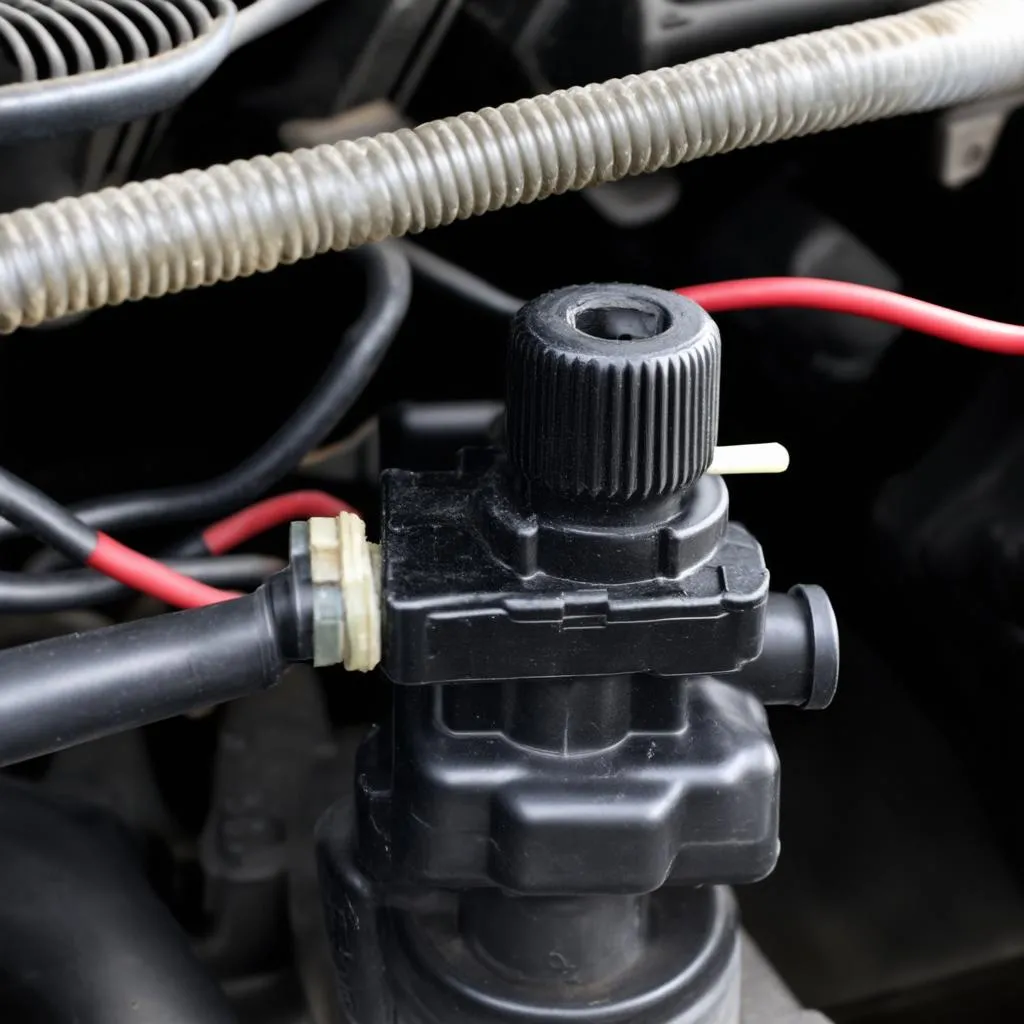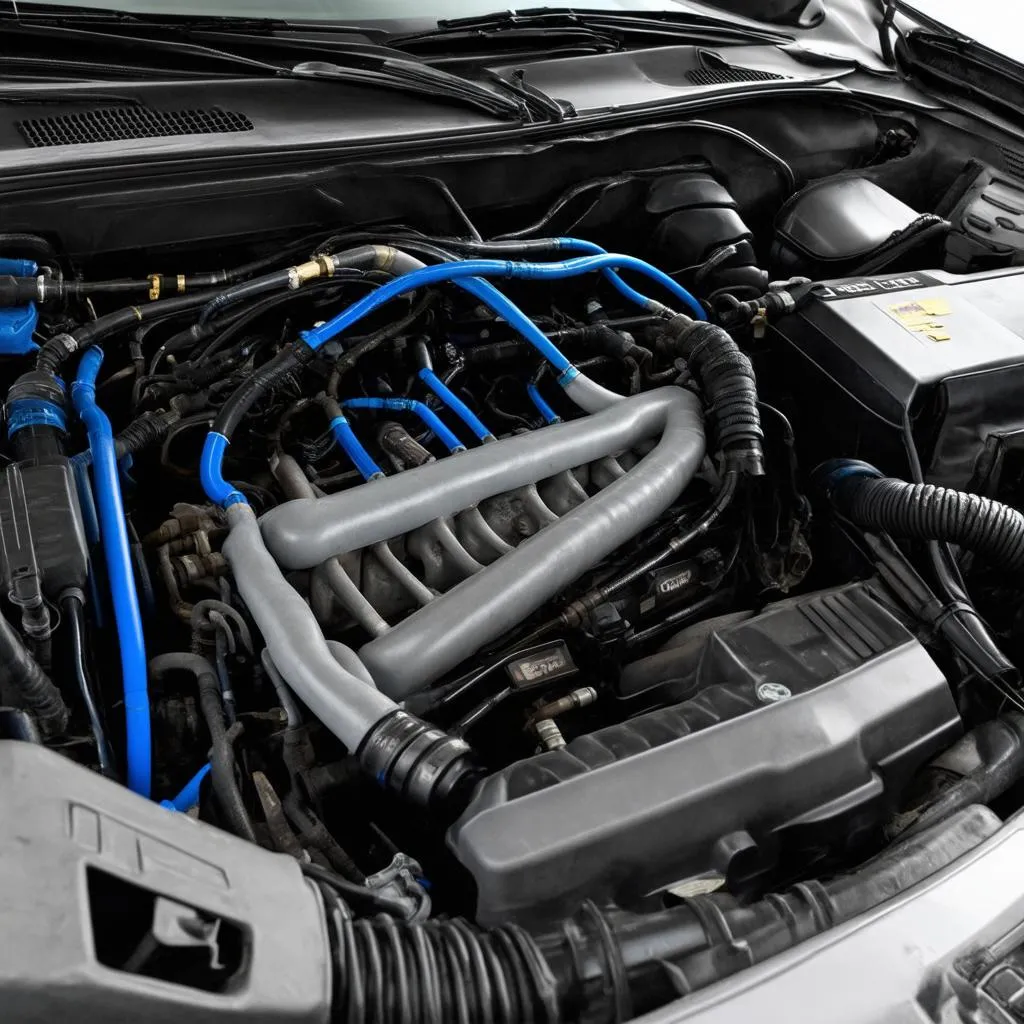Ever felt like your car was whispering secrets to you through a series of flashing lights on the dashboard? Well, that’s exactly what OBD codes are! Today, we’re diving deep into one specific code: Chevrolet Obd Code P1404.
Let’s imagine you’re cruising down the highway, enjoying the open road, and suddenly a check engine light pops up. It’s like that gut feeling you get when something isn’t quite right, but you can’t quite put your finger on it. That’s when the OBD code comes into play, acting as a cryptic message from your car, hinting at a potential problem in the engine control system.
Understanding Chevrolet Obd Code P1404
What does P1404 Mean?
In the world of automotive diagnostics, P1404 is a code that signals a “Evaporative Emission Control System (EVAP) Purge Control Valve Stuck Closed.” In essence, this code means that the valve responsible for releasing fuel vapors from the EVAP system to the engine is stuck in a closed position. Think of it as a tiny door that’s supposed to open and release built-up pressure, but it’s jammed shut.
The Importance of the EVAP System
To understand P1404, it’s crucial to grasp the importance of the EVAP system. The EVAP system is a critical component in modern cars, working tirelessly to prevent fuel vapors from escaping into the atmosphere. These vapors, if left unchecked, can contribute to air pollution.
Think of the EVAP system as a mini-recycling program inside your car. It collects fuel vapors that evaporate from the fuel tank and directs them back to the engine for combustion. This process reduces fuel consumption and contributes to a cleaner environment.
Causes of P1404
P1404 can stem from a variety of reasons, but some of the most common include:
- Faulty Purge Control Valve: The most likely culprit is a faulty purge control valve itself. This valve, often made of plastic, can become worn, damaged, or even stick due to buildup of debris.
- Clogged Vacuum Lines: The purge valve works in conjunction with vacuum lines, which can become clogged with dirt, debris, or even condensation.
- Electrical Issues: Electrical problems, such as a short circuit or a faulty wiring harness, can disrupt the proper functioning of the purge control valve.
- Defective Fuel Cap: A loose or damaged fuel cap can allow fuel vapors to escape, triggering the EVAP system to work harder, potentially leading to P1404.
Troubleshooting P1404
Now, you’re likely wondering what to do if you encounter P1404. The good news is that there are a few steps you can take to diagnose and potentially resolve the issue:
- Inspect the Purge Control Valve: Begin by visually inspecting the purge control valve. Look for any signs of damage, cracks, or leaks. If the valve seems to be functioning properly, you can test it by applying vacuum pressure to the valve.
- Check Vacuum Lines: Carefully inspect the vacuum lines connecting the purge control valve to the engine intake manifold. Make sure they are free of cracks, leaks, or blockage.
- Test Electrical Connections: Check the electrical connections to the purge control valve for corrosion or loose connections.
- Verify Fuel Cap: Ensure that the fuel cap is properly tightened and free of damage.
Always remember: If you’re not comfortable tackling these tasks yourself, it’s best to consult a trusted mechanic.
P1404 and Its Impact
Driving with a P1404 Code
So, what happens if you ignore P1404 and continue driving? The answer is, it depends.
- Minor Impact: In some cases, the P1404 code might simply trigger a check engine light. However, the car may experience a slight reduction in fuel efficiency.
- Serious Impact: In other situations, a faulty EVAP system can lead to a rough idle, stalling, or even the inability to start the engine.
It’s important to address P1404 promptly to avoid potential driving issues.
Cost of Repairing P1404
The cost of fixing P1404 can vary depending on the root cause of the problem.
- Replacing the Purge Control Valve: The cost of a new purge control valve can range from $50 to $200, depending on the make and model of your vehicle.
- Repairing Vacuum Lines: Repairing or replacing vacuum lines can cost anywhere from $50 to $150.
- Electrical Repairs: Electrical repairs, if necessary, can be more expensive, ranging from $100 to $300 or more.
Tip: While it might be tempting to try DIY fixes, a professional mechanic can often diagnose and repair the issue more efficiently, saving you time and potentially avoiding further complications.
FAQ – Frequently Asked Questions
Q: Will P1404 cause my car to fail an emissions test?
A: Yes, a malfunctioning EVAP system can cause your car to fail an emissions test. It’s best to address P1404 before scheduling an emissions test.
Q: Can I drive with P1404?
A: It’s best to avoid driving with P1404, especially if the car is experiencing performance issues. However, if you must drive, do so with caution and get the problem fixed as soon as possible.
Q: Can I reset P1404 by disconnecting the battery?
A: Disconnecting the battery might temporarily reset the code, but the underlying issue remains. The code will likely reappear once the system is powered back on.
Q: How long does it take to fix P1404?
A: The time required to fix P1404 varies depending on the complexity of the issue. A simple purge valve replacement might take an hour or two, while more complex electrical repairs could take longer.
Further Resources
For more in-depth information on the EVAP system and troubleshooting codes, you can consult your vehicle’s owner’s manual, refer to online automotive repair forums, or contact a professional mechanic.
 Chevrolet OBD Code P1404: Purge Valve
Chevrolet OBD Code P1404: Purge Valve
 Chevrolet OBD Code P1404: Vacuum Lines
Chevrolet OBD Code P1404: Vacuum Lines
Contact Us
Need help with diagnosing or fixing your car’s EVAP system? Don’t hesitate to contact us at Whatsapp: +84767531508. Our team of experts is available 24/7 to assist you.
In the end, understanding your car’s codes is like deciphering a secret language. By paying attention to these messages, you can ensure your vehicle runs smoothly and safely for many miles to come.
Have you ever encountered P1404 in your Chevrolet? Share your experience and any troubleshooting tips in the comments below!